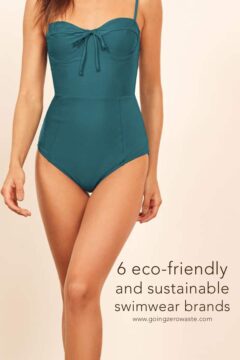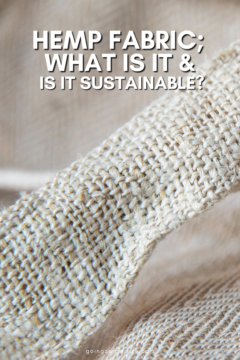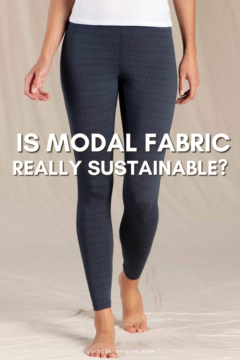Last Updated on March 14, 2024
Have you ever come in contact with a burlap bag? Congratulations: You’ve probably met jute!
While burlap can be made from hemp, flax, or synthetic materials, the most common material used to make burlap is jute.
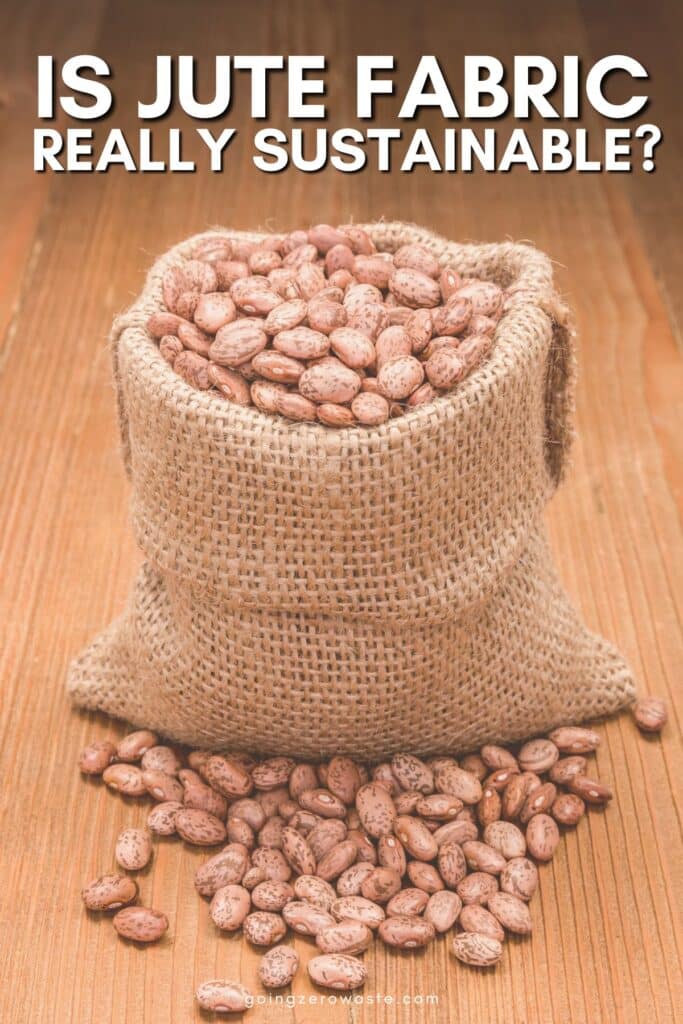
That’s because jute is a sturdy material and jute burlap bags are often used on farms and in agricultural settings to provide insulation, protect from erosion, or transport fruits, vegetables and grains.
However, jute has been slowly but surely making its way into the mainstream too: Jute jackets, sweaters, tote bags, furniture and rugs have been popping up on the market more than ever before. I’ve even seen jute bags used as bridesmaid gifts.
But what is jute? And is it sustainable? Here’s everything you need to know regarding jute and if you should look for this material or avoid it in your next purchase.
Table of Contents
what is jute made out of?
Jute is made out of the jute plant. There are several different botanical varieties, one of the most common being the white jute plant (Corchorus capsularis). There’s another species called tossa jute (C. Olitorius) that is harder to cultivate but considered to be superior.
The plant grows in similar conditions to rice, and this plant is best suited for warm areas that have annual monsoon seasons. Humidity levels need to be approximately 80% for successful production. It cannot grow in hard water.
These plants can grow to be over 10 feet high. The fibers derived from these plants are harvested in a single long string.
In terms of most-produced plant-based fiber, jute is a close second to cotton. While it isn’t super popular in the Western world, it is one of the primary textile fibers of India and neighboring countries.
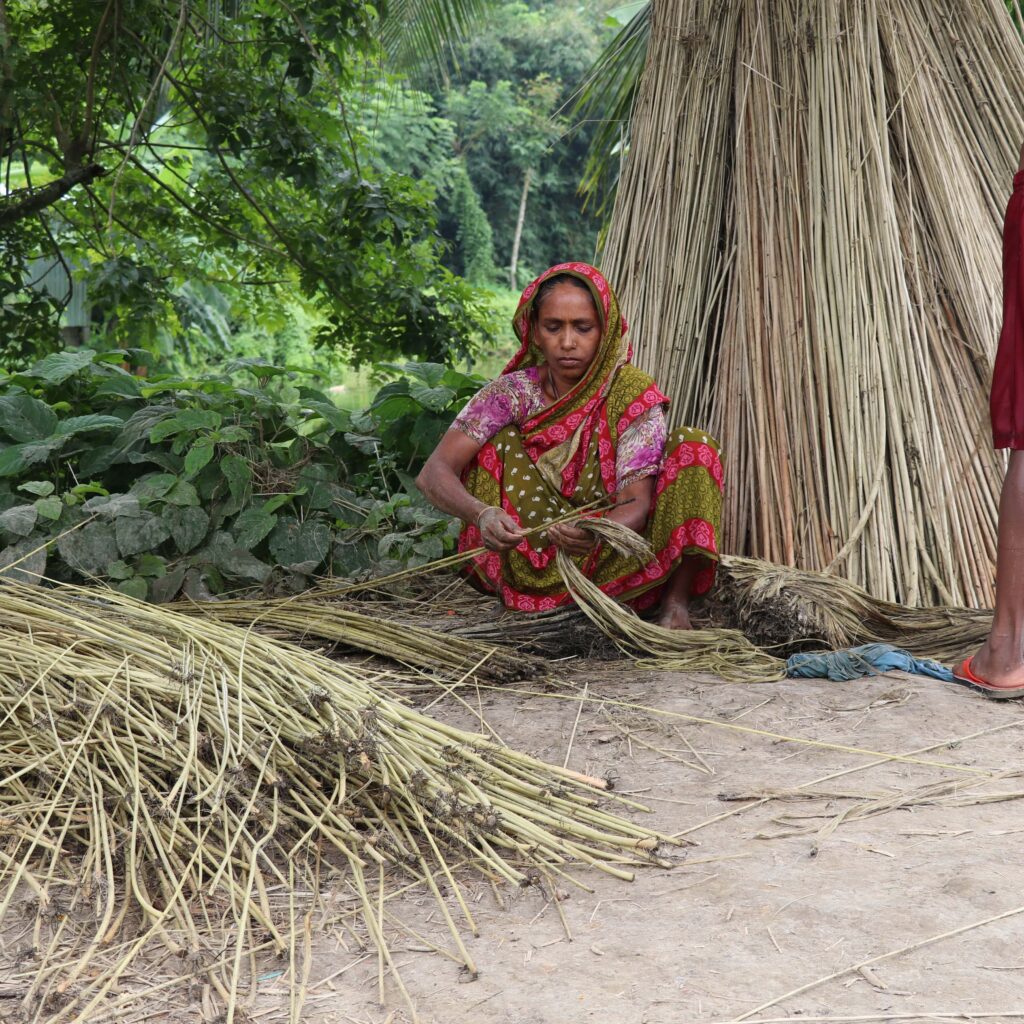
how is jute fabric made?
- Mature stalks are harvested by hand.
- Next, they’re defoliated (meaning their leaves are removed).
- Retting is used to remove the non-fiberous from the stem and skin of the stalk.
- After the stalk has been retted, it’s now possible to separate the long, silky fibers and comb them into strings.
- These combed fibers can then be spun into yarn.
- The fibers might be subjected to various chemical processes to dye it, make it fire resistant, or give it water resistant.
- The finished reels of fiber are shipped to textile production facilities where they are then woven into textiles for various purposes.
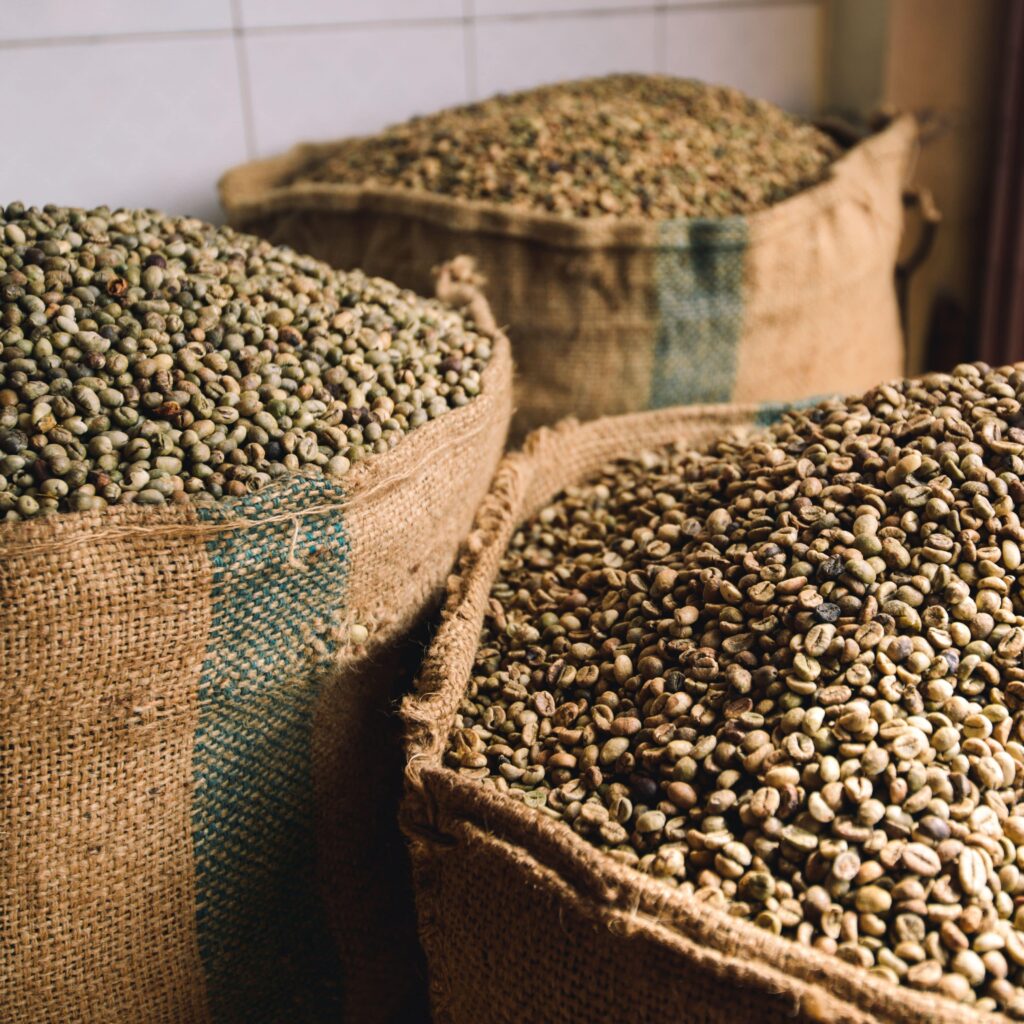
is jute a good fabric?
Jute is a good fabric in terms of it being durable: It is ideal for industrial and agricultural purposes. However, it is a relatively rough fiber, which doesn’t make it ideal for apparel.
However, this material can be turned into clothing if it goes through an extensive production process. As advanced techniques for processing increase, this plant-based fiber is being used to make garments such as jackets, cardigans, and even sweaters. In Indian culture, it is being made into printed kurtis, tunics, and sarees.
In terms of the environment, jute is a good fabric because it is easy to produce and the process has a smaller impact on the environment than many synthetic alternatives. Generally speaking, natural fibers like jute, flax (linen), and hemp have lower carbon footprints than glass and mineral fibers.
This plant requires minimal fertilizer and pesticide use, particularly in comparison to cotton. It’s also renewable and the leftover roots and leaves that fall off the plant enrich the soil and increase its fertility.
These plants also help clean the air: Every hectare of this crop absorbs approximately 15 tons of carbon dioxide and releases 11 tons of oxygen.
Not to mention it is 100% biodegradable. Any products made solely from jute fibers can be composted, which makes it a circular fabric.
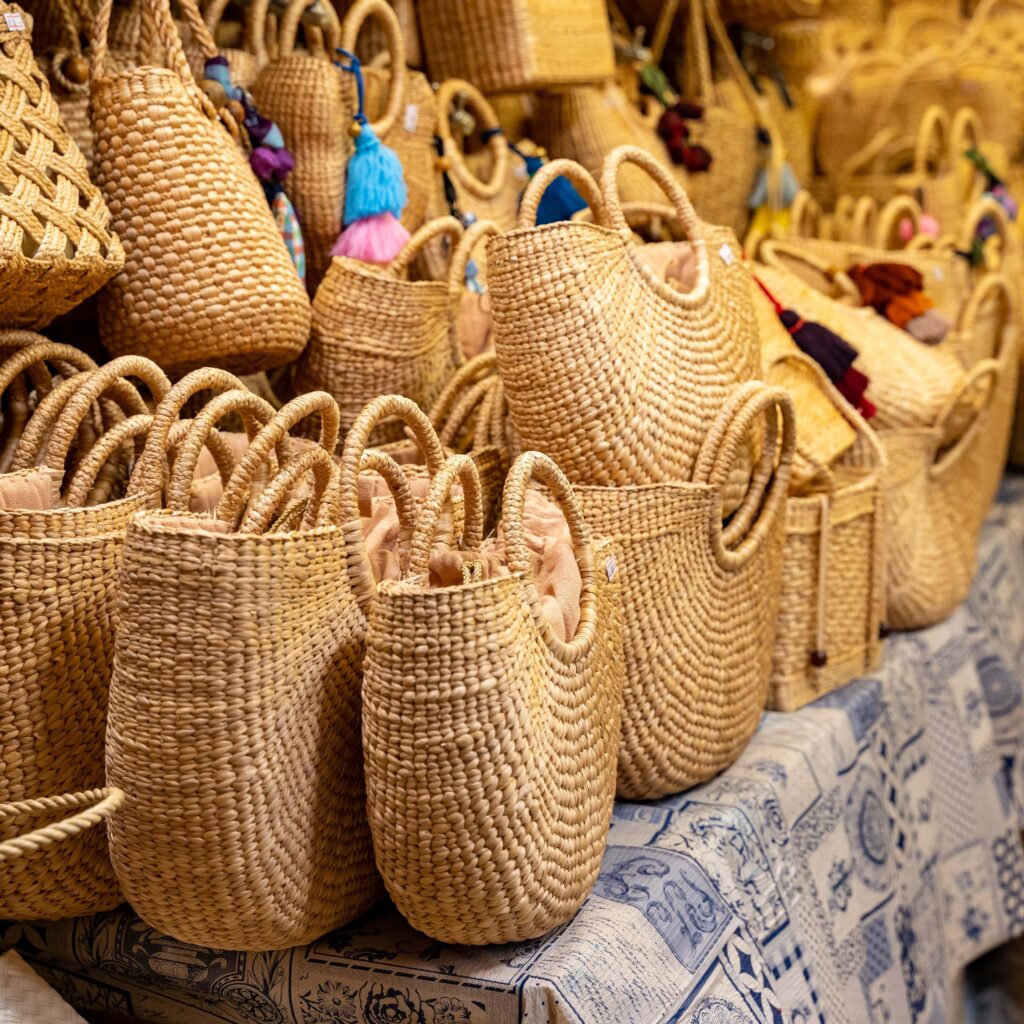
what is special about jute?
Jute is special due to its affordability and second only to cotton in the amount produced. This material has been used in many ways both agriculturally, industrially, and around the home.
It’s commonly used in its natural shade, which is a light tan or golden hue. While it can be dyed, its natural shade is most popular and creates a bohemian aesthetic. When mixed with other fibers, it can make twine, string, and rope.
Here are some uses for it:
- Burlap bags are used for the transport of fruits, vegetables, grains, and other goods
- Sapling roots are wrapped in it as protection when they are transplanted
- In agriculture, it has been used to control erosion and weeds, as well as to protect seeds
- Used to make furniture, chair covers, rugs, curtains, and other household furnishings
- Used in crafts and DIY projects
is jute better than cotton?
In terms of clothing, jute is not better than cotton because cotton is still much softer than jute is. However, this material has a smaller carbon footprint and is better for the environment in terms of production.
Conventional cotton is a water-intensive crop. Chemicals sprayed on the plant will mix with water runoff. This leads to groundwater contamination. To give you an idea of how water-hungry cotton is, it takes 2,500 liters of water to produce one t-shirt.
Cotton is also one of the top four genetically modified crops in the world. It’s considered the world’s “dirtiest crop” because it requires heavy amounts of toxic pesticides. These pesticides have poisoned thousands of cotton farmers, as well as pollute the environment.
If you’re thinking about getting a new item, choose to support brands that utilize jute over conventional cotton. However, choosing organic cotton over conventional cotton is also a much better choice, as it’s grown without pesticides and with less water.
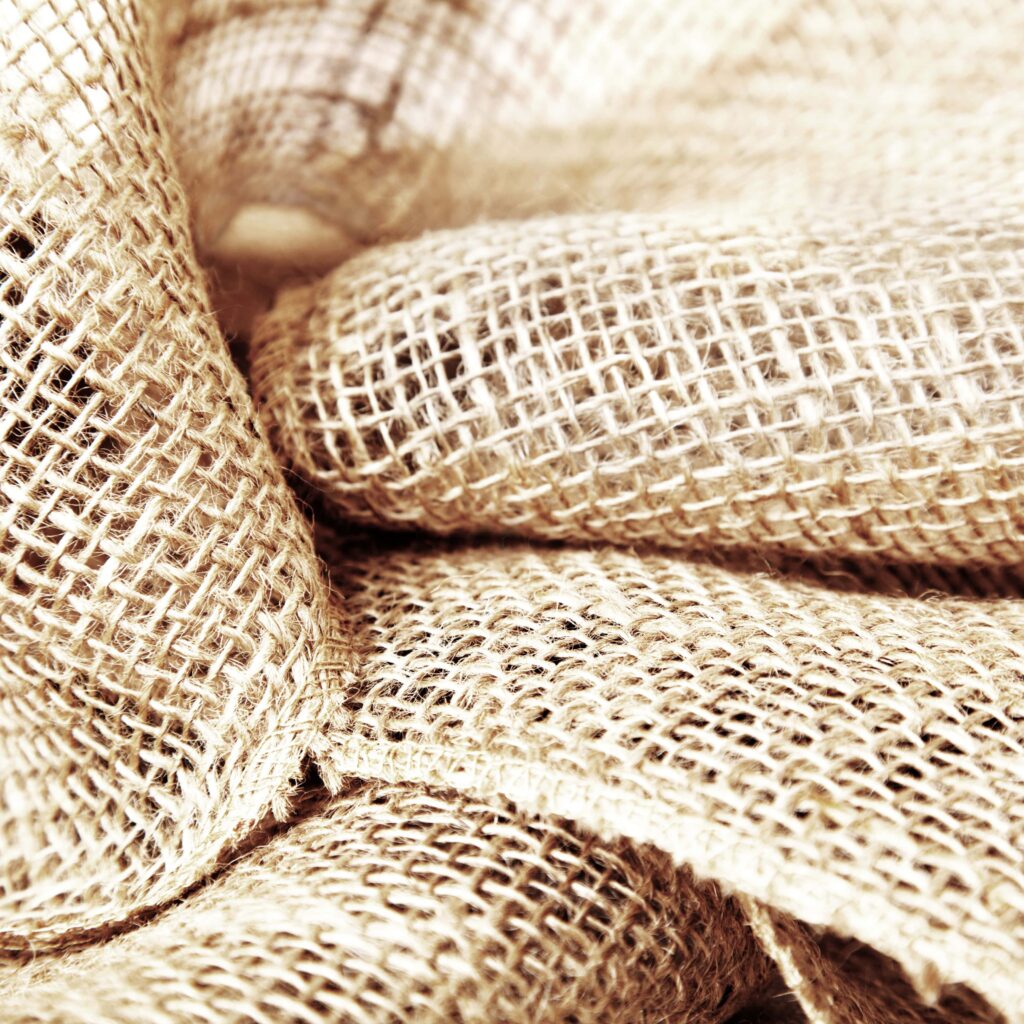
can jute get wet?
Jute should not get wet. It reacts poorly to moisture, whether that is due to rainfall, humidity, or spillage. The fibers tend to be susceptible to mold and mildew.
It’s best if you keep this material in a dry, cool location. It’s not recommended to keep these pieces outdoors, unless you plan to let them biodegrade with the soil (for example, burlap bags wrapped around sapling roots).
how do you clean jute?
You can clean jute by using a dry rug shampoo or baking soda. Just sprinkle the dry shampoo/baking soda on the area you wish to clean. Let it sit for a couple of hours, then vacuum it up. If it’s a rug, flip it over and repeat on the other side.
Avoid using wet liquids, as this can cause discoloration and encourage mold/mildew. You’ll want to stick with spot cleaning.
So, what are your opinions on this plant-based fabric? Let me know in the comments!


